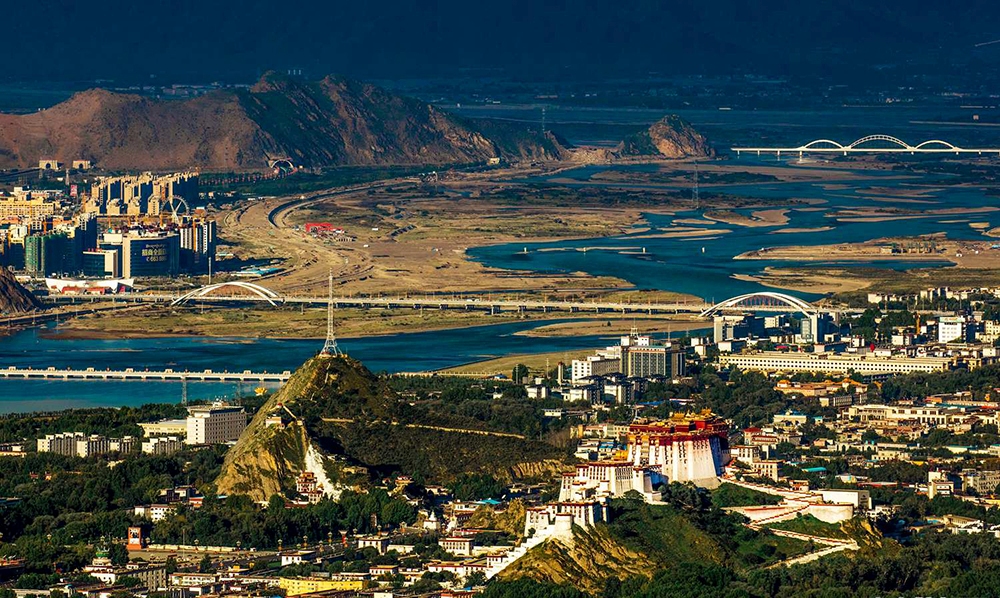Letter from Lhasa: Indulge in healing touch of Tibetan medicinal bath
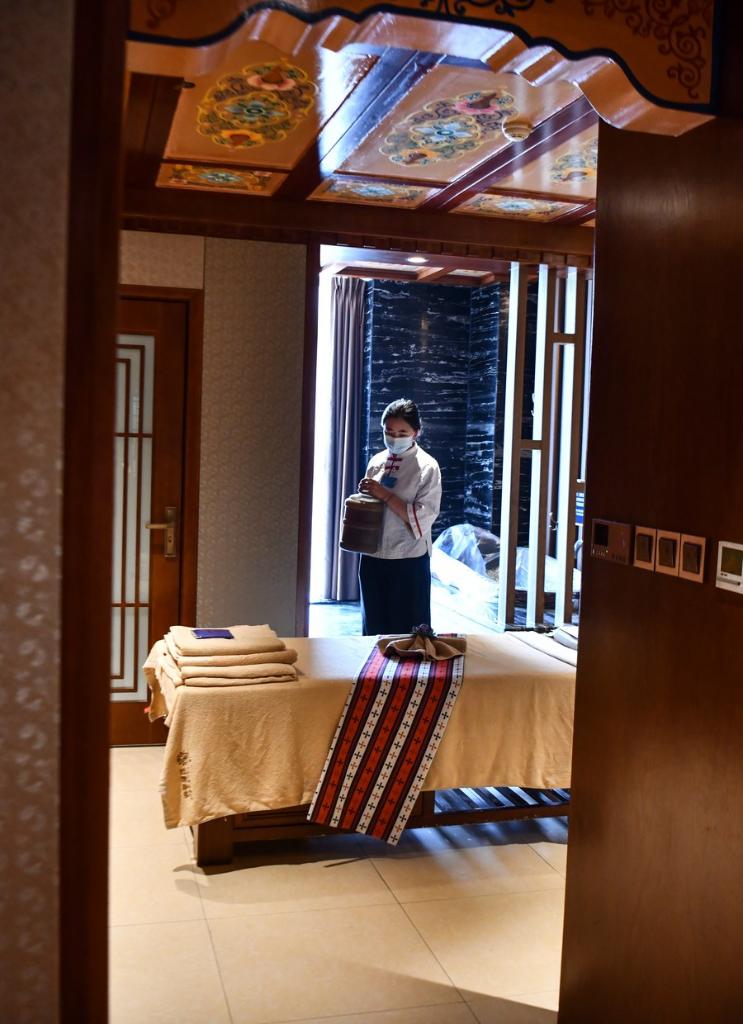
A worker prepares a room for customers at a Tibetan medicinal bath center in Lhasa, southwest China's Tibet Autonomous Region, April 14, 2023.(Xinhua/Jigme Dorje)
by Cao Bin
LHASA, April 15 (Xinhua) -- If I had to choose only one activity that I've always wanted to experience in Tibet, it would be a Tibetan medicinal bath. And fortune smiled on me recently as I had the opportunity to visit a bath center in the downtown area of Lhasa, the regional capital, with a friend over a weekend.
The experience was so incredible that I felt compelled to share it with you.
The 1,300-year-old Tibetan medicinal bath, officially called the Lum medicinal bathing of Sowa Rigpa, was inscribed on the Representative List of the Intangible Cultural Heritage of Humanity by UNESCO in 2018.
The term "Sowa Rigpa" in Tibetan literally means "the knowledge of recuperation," while "Lum" refers to traditional knowledge and practices of bathing in natural hot springs, herbal water, or steam to restore the balance between the mind and body, and to promote wellness while treating various ailments.
The Tibetan medicinal bath is among China's world-class intangible heritages in the field of traditional medicine, along with acupuncture and moxibustion.
The bathing center I visited has incorporated modern adaptations to traditional routines, revitalizing the ancient medicinal treatment and creating a sought-after experience for many young people.
In one word I would call this experience simply heavenly. This was probably the first time in my life that I entered a bath with such awe.
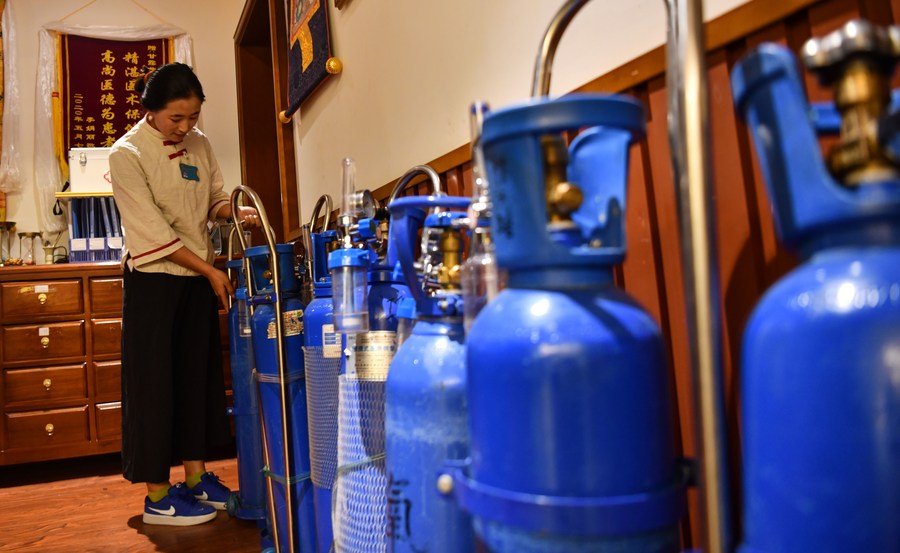
A worker prepares oxygen tanks at a Tibetan medicinal bath center in Lhasa, southwest China's Tibet Autonomous Region, April 14, 2023.(Xinhua/Jigme Dorje)
Upon entering the hall of the bath center, I noticed rows of oxygen tanks placed against a wall. I was told that hypoxia could occur during the bath. As a result, the center took all necessary precautions to ensure that customers could indulge in a relaxing experience.
As we waited on the sofa in the lounge area, we were greeted by the pleasant aroma of medicine-scented mists wafting from the ceiling. The healing had already begun before we even entered the bath!
The wait is perhaps never dull when there's free food on the table. A buffet of drinks and fruits was served at the lounge, but I was particularly captivated by the stunning Tibetan decorations such as the colorful woodcarving ceilings, corridor lights designed as prayer wheels, and mandala-themed Thangkas.
As I looked around the center, I noticed approximately a dozen customers, most of whom were young Tibetans and tourists. It seemed that the younger generation was drawn to the experience out of curiosity, whereas older locals prefer the bath as a common medical treatment in local hospitals.
The Qinghai-Tibet Plateau boasts abundant geothermal resources, and for thousands of years, Tibetans have recognized the therapeutic properties of hot springs against various diseases.
According to Yanga, a professor at the region's Tibetan Medicine Hospital, at present such hospitals offer three kinds of Tibetan medicinal baths, namely, water bath, steam bath and compress bath.
Residents in the region can also adopt the ancient medicinal bath as part of their daily healthcare routine under the guidance of Tibetan practitioners (known as Manpa in Tibet).
After about 10 minutes, I was introduced to a doctor who checked my pulse and consulted with me about my health condition before prescribing a tailored set of herbs required for my bathwater.
Thereafter, I was escorted into a tranquil private room equipped with a shower cubicle, a wooden bathtub, and a comfortable massage bed. The scent of Tibetan incense permeated the air, creating a calming aura.
After approximately five minutes in the bath, I began to sweat, and within 10 minutes, beads of sweat formed all over my forehead and face.
After 20 minutes or so, I stepped out of the bathtub and was wrapped in towels as I continued to sweat.
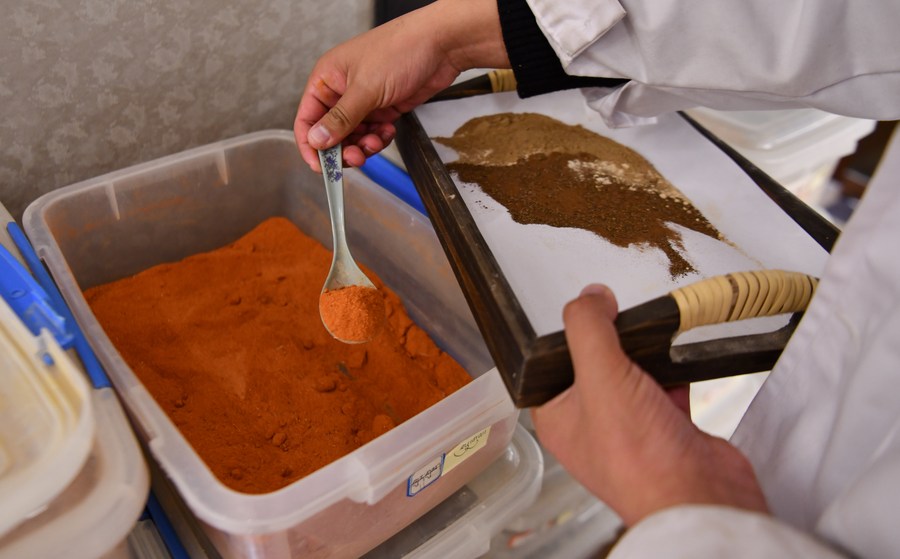
A worker prepares a set of herbs required for bathwater at a Tibetan medicinal bath center in Lhasa, southwest China's Tibet Autonomous Region, April 14, 2023.(Xinhua/Jigme Dorje)
In the midst of this unique experience, I recalled what a Tibetan friend once told me. It is not easy to sweat in the plateau climate, and it suddenly dawned on me the importance of the Tibetan medicinal bath in helping locals to sweat and detoxify their bodies.
Due to the high altitude and cold climate throughout most of Tibet, farmers and herders in the region often suffer from rheumatic diseases. Medicinal bath, in this unique environment, has been found to have curative effects on numerous illnesses, including rheumatic diseases, neurogenic diseases, arthritis, skin diseases, and gynecological disorders.
The folk custom of Lum medicinal bath has also evolved into a bathing festival called Karma Dulpa Festival, usually held in the seventh or eighth month of the Tibetan calendar.
Years ago, I was once invited to take part in the traditional bathing festival. The week-long event featured various elements of the local traditional culture, such as medicinal practices, Thangka painting, carving and epic poetry chanting. Unfortunately, at the time, I failed to partake in the essential aspect of the festival -- the medicinal bath.
Looking back, I do regret missing out on such a significant experience.
As I was lost in these thoughts and recollections, my "detoxification" process came to an end, and my body gradually began to cool down. The session was both relaxing and consuming, leaving me feeling completely rejuvenated. Some fruits, Tibetan noodles, and white fungus broth were waiting for me outside the massage room, allowing me to indulge in a well-deserved refreshment.
The herbs and minerals used in my bath date back 2,500 years. Traditional Tibetan medicine has absorbed the influences of traditional Chinese, Indian and Arab medicine and is mainly practiced in Tibet and the Himalayan region. Currently, Tibet has basically established a Tibetan medicine service system that covers the entire region.
The experience of Tibetan medicinal bathing is not just about taking a bath; it also encompasses a rich and well-preserved cultural and ritual experience.
Tibet Stories
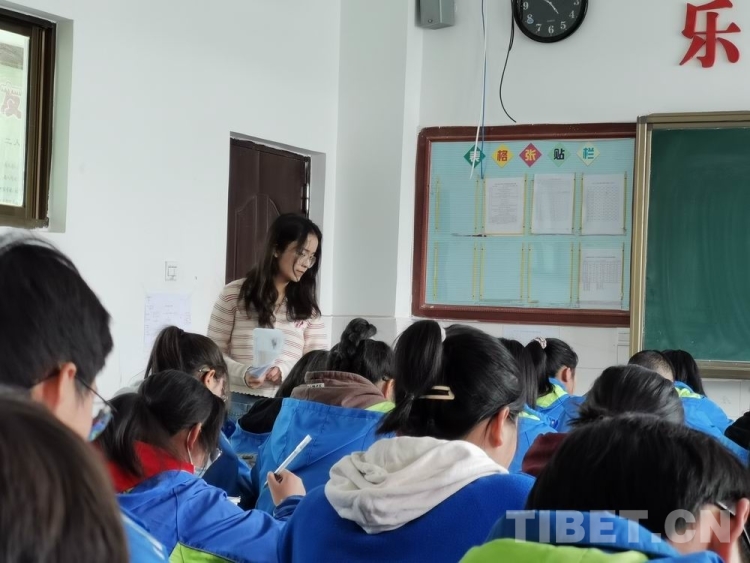
Tibet boarding schools narrow the rural-urban education gap
The boarding school system in Tibet has maximized education opportunities for the children o...

